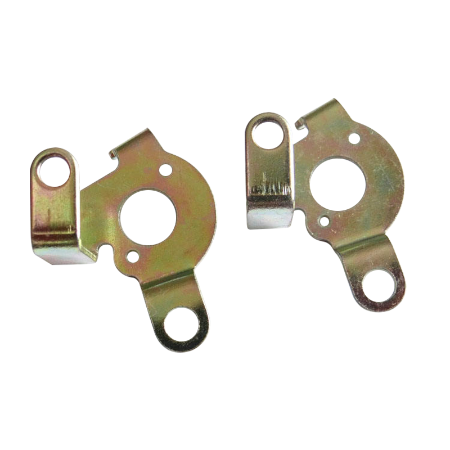The Metal Die Casting process can produce complex shaped products and can offer excellent dimensional accuracy and surface finish. It’s also a highly efficient manufacturing process and can compete with other fabrication methods.The die casting machine has a fixed or cover half and an ejection half that contains a sprue hole, gate, and runner system. The molten metal is injected into the dies where it cools and solidifies to become the finished product.Die casting offers a number of benefits that make it an attractive option for manufacturing. It has lower tooling costs than other manufacturing processes, and it allows you to produce parts with close tolerances. It also eliminates the need for additional machining and enables you to create thin walls.To ensure precision, manufacturers use a series of tools to control the process. These include the ejector, runners, biscuit (or sprue), and flash. These features are located inside the die cavity, and they are used to direct molten metal into and out of the mold.

Unlike plastic injection molding, die casting produces components that are stronger and lighter. They are dimensionally stable and can handle tight tolerances without much difficulty. The process also offers a better finish than other manufacturing methods. Manufacturers often subject the resulting products to sandblasting and other processing for an impeccable finish. They are then ready for shipment or usage. These benefits make it a popular choice for many different industries.Die casting can produce complex shaped products of light metals with high precision. It is especially useful for parts that have to withstand high temperatures and pressures, such as automotive and medical equipment components. It can also provide excellent surface finish, comparably reduced porosity and dimensional accuracy.The process involves four main steps: preparing the dies, injection, cooling and ejection. The dies are sprayed with a lubricant to prevent the molten metal from sticking to them. Then, the molten metal is injected into the dies under high pressure. This ensures that the melted metal is forced into even the smallest corners of the mold and mitigates shrinkage.
The metal is then cooled in the mold until it solidifies. After that, the die halves are separated and the ejector pins push the casting out of the die. Any excess metal is then trimmed using different tools. The quality of the die cast part depends on its design and metal alloy.Die casting is a flexible process that can be used for a variety of applications. It allows for a high production rate and produces uniform quality that requires less labor than other methods of manufacturing metal parts. This flexibility makes it a popular choice for automotive, aerospace, and medical industries.The metal alloys used in die casting can be altered to suit specific needs. For example, zinc is often used in die cast parts to ensure the metal has a low melting point. It also provides good corrosion resistance and a smooth surface finish.
The metal die is split into two sections – the fixed or cover half and the ejector half. The ejector half is equipped with a sprue hole, runner, and gate to route the molten metal into the mold cavity. A drafting rod or ejector pins is then used to push the die casting out of the mold. It is important to avoid undercuts in the design of your part. They can cause the liquid metal to shrink during solidification, which can affect the dimensions and injection pressure of the part.Die casting can be a cost-effective way to produce a part. This is because one part can replace multiple components, eliminating secondary milling, boring, reaming, and grinding operations. In addition, the process is incredibly accurate and has very low scrap rates. However, the initial investment in metal molds can be high. The overall cost of die casting can be reduced by choosing a smaller mold with multiple cavities.
During the casting process, the molten metal is injected into the dies at high pressure. This pressure is maintained until the molten metal solidifies in the die cavity. The time this takes depends on the geometric complexity of the die and the desired wall thickness of the finished product.The trimmed castings are then ejected from the dies by an ejector system. The ejector system consists of two parts: the ejector pins and the ejector plate. It is important to choose the right ejector system for your project because it will affect the final quality of the castings. If the ejector pins are too weak, they will fail to push the cast parts out of the dies, resulting in a defective casting.

 English
English русский
русский Deutsch
Deutsch












